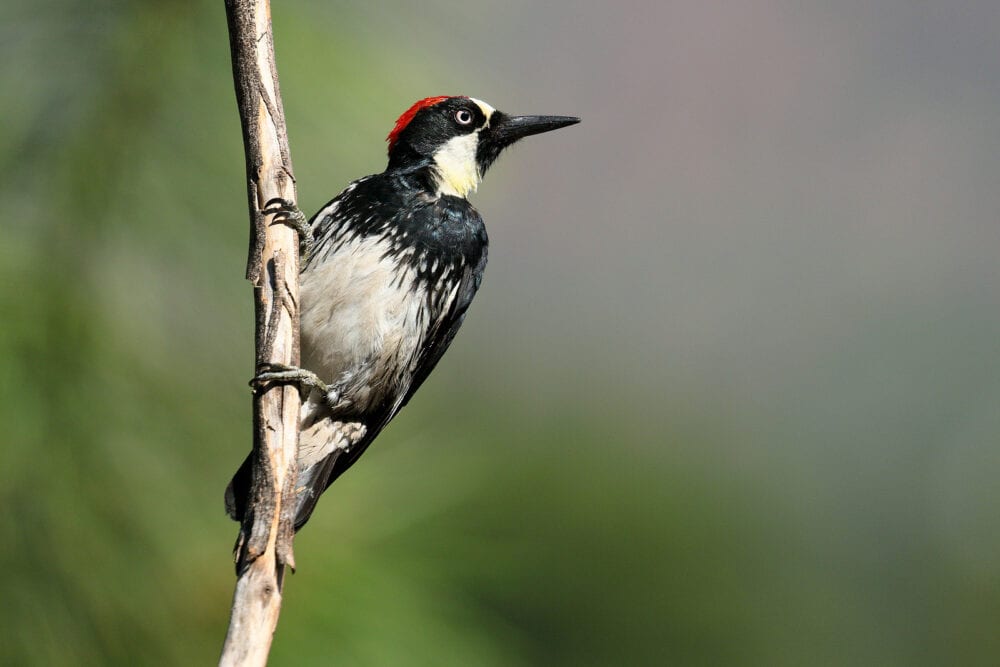By Bob Walker
One of our most reliable visitors to the Los Alamos Nature Center is the Acorn Woodpecker (Melanerpes formicivorus). They regularly visit the suet or seed feeders in the wildlife area, and can often be seen chasing away competing birds, squirrels, and chipmunks from “their” bird food. Acorn Woodpeckers are of a medium size, with conspicuous red, black, and white markings on their face that have earned them the nickname of being the “clown faced woodpecker.” They are named after their habit of collecting seeds (acorns, when the oaks in the mountains are successful) and stuffing them into holes they make in dead trees. These stored seeds serve as emergency provisions in case other natural food sources become scarce.
There’s a slight difference in the facial markings of the male and female Acorn Woodpecker. Look at the picture below, and notice that the female bird has an extra band of black feathers on its crown, between the red at the top of the head and the white that is near the bill. Once you have done that, determine the sex of the bird above, sitting on the tree branch. See the end of the article for the answer.

Most Acorn Woodpecker populations do not migrate. Instead, they reside year-round in oak or pine forests from Central America as far north as Washington State. They cooperatively breed in groups, sharing mating, nesting duties, rearing of young, and storing acorns. Acorn Woodpeckers are commonly seen in Los Alamos and present in Bandelier, but they had not been reported in White Rock until this fall, when a few have been spotted, undoubtedly as a part of this fall and winter’s large montane irruption. Attract them to your yard by putting out suet, sunflower seeds, peanuts, or cracked corn.
For more information about Acorn Woodpeckers, visit the web pages at identify.whatbird.com and allaboutbirds.org
Enjoy more beautiful photos of Acorn Woodpeckers at the Alan Murphy and Glenn Bartley websites.
Answer: It’s tricky, because all the red barely shows in profile, but — it’s a boy!


Bob, appreciate your articles and photos. I am always learning a lot.
I am reminded of being at a birder’s backyard during one winter when I lived in Casper, Wyoming (early 1980’s), an entire flock of at least 40 > Bohemian Grosbeaks hit their feeders– it gave meaning to the term ‘irruption’ of birds. Such a cacophony of sounds and activity. Your Evening Grosbeaks (flock of 7) rekindled this wonderful experience– I must remember that I love this stuff !
Thank you, Bob Walker http://peecnature.org/bird-of-the-week-the-evening-grosbeak/